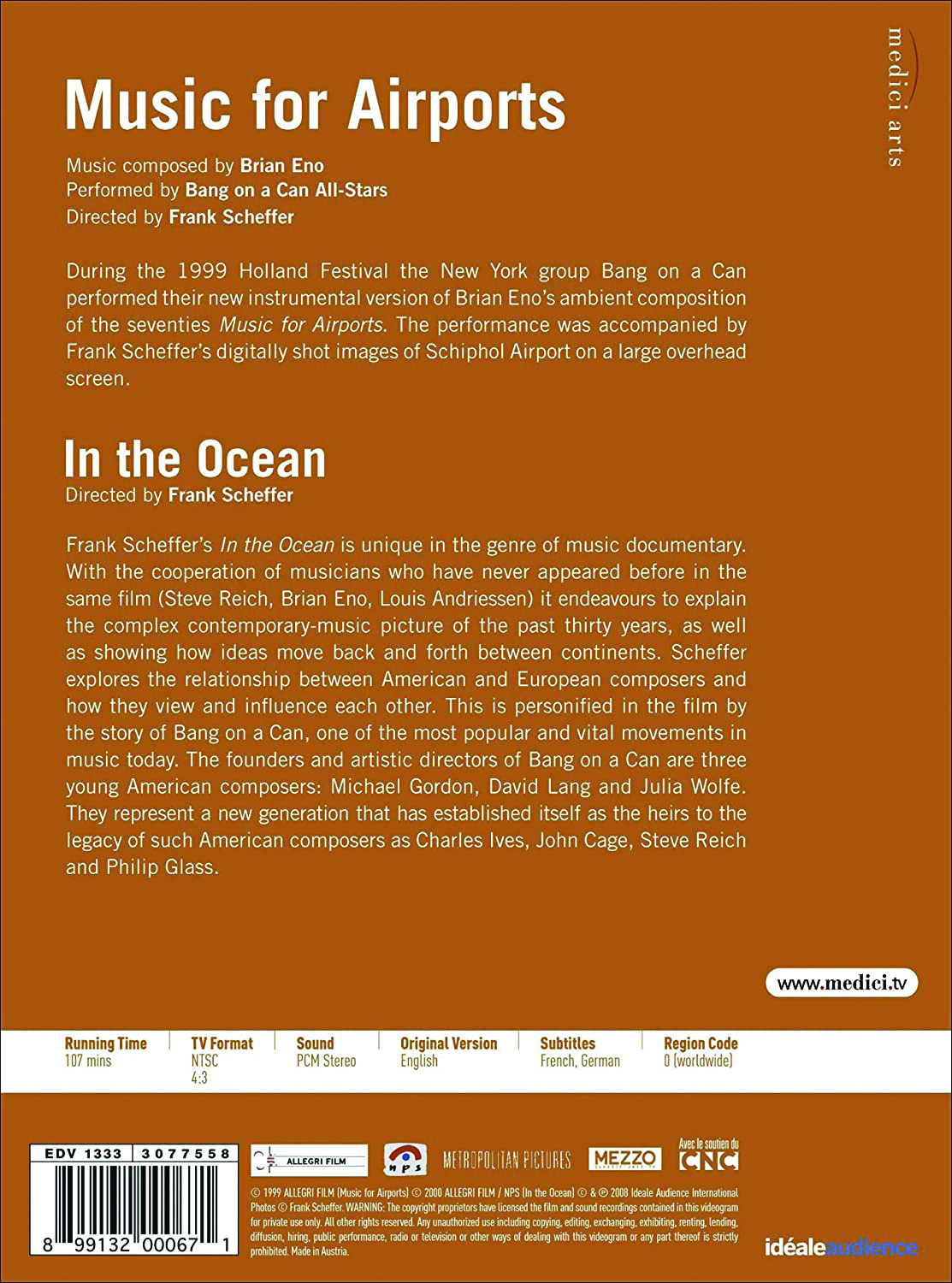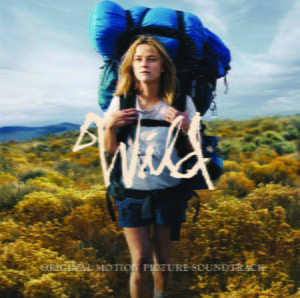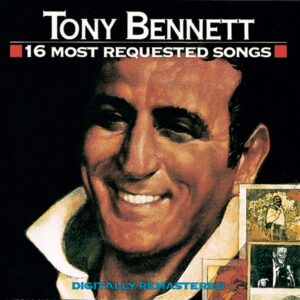Product Description
During the 1999 Holland Festival, the New York group Bang on a Can performed their new instrumental version of Brian Eno’s composition of this 70s work. The performance was accompanied by Frank Scheffer’s digitally shot images of Schiphol Airport on a lar
Review
Music for Airports features a double-bill from Dutch filmmaker Frank Scheffer. In the title piece, which premiered at 1999’s Holland Festival, Scheffer’s abstract video imagery provides the visuals for New York’s six-piece Bang on a Can performance of Brian Eno’s 1978 ambient music album (this version was also released on CD in 1998). Divided into four parts, each section features an arrangement by a different member: Michael Gordon, David Lang, Julia Wolfe, and Evan Ziporyn. Since the musicians themselves remain off-screen–viewers are instead treated to out-of-focus shots of passengers and airplanes arriving and departing from Amsterdam’s Schiphol airport–the end result feels more like an art installation than a concert. As for the music itself, Eno explained in the liner notes to the original record that “it must be as ignorable as it is interesting,” which about sums it up. The second Scheffer film–2001’s In the Ocean–takes a wide-ranging look at contemporary avant-garde/minimalist music, focusing on the story of Bang on a Can, while offering commentary from peers and influences such as Eno, John Cage, Steve Reich, Philip Glass, Elliot Carter, and Louis Andriessen. Music samples and scenes of bustling Big Apple street life are interspersed throughout. Modern music collections will want to consider–more for the informative documentary than the lackluster title piece–but this is optional elsewhere. — Video Librarian, K. Fennessy, May/June 2009
This DVD is a double-bill by and about the Bang on a Can composers’ collective, two very different films directed by Dutch documentary filmaker Frank Scheffer. The first is an adaptation of Brian Eno’s 1978 album of ambient music Ambient 1: Music for Airports, originally conceived as a sound installation to be played on continuous loop. A set of repeating chords (especially closely related mediant chords melting into one another) with slight variations for piano and clouds of synthesized sounds (strings, voices), it was supposedly inspired by an unexpected layover Eno suffered at Cologne-Bonn Airport, and it was eventually installed at LaGuardia. The concept might lead you to think that the music is nightmarish, an endless wait that circles back upon itself, but it is really just a dreamy wash, amelodic, like a mind lost in thought, at the edge of sleep.
The can-banging holy trinity of Michael Gordon, David Lang, and Julia Wolfe each made an arrangement of Eno’s piece, to form a four-movement suite with a final arrangement by their associate clarinetist Evan Ziporyn. The group’s performance of these arrangements provides the soundtrack to Scheffer’s 1999 film, four tableaux made with the camera more or less severely out of focus. The shots are slow-motion views of airports, people walking through a revolving door, jets taxiing, people pushing luggage carts or pulling suitcases. Images come more or less into comprehensibility and just as quickly dissolve into blobs of color, that flow back and forth in a way reminiscent of the lava lamp. You will probably see this movie put on continuous loop in the chill room of the next rave you attend.
The second feature, In the Ocean, is a more straight-laced documentary by Scheffer about the history of the Bang on a Can festival and its associated movements in modern music. There are spoken contributions from and excerpts of music by John Cage, Philip Glass, (a fairly angry) Steve Reich, Elliott Carter, Louis Andriessen, as well as the can-bangers themselves. It is informative, thought-provoking, and aesthetically pleasing. Worth a look for anyone with an interest in contemporary music. — Ionarts blog, Charles Downey, February 19, 2009
This absorbing film inlcudes performance of the musicians’ own pieces, and interviews with composers such as John Cage, Philip Glass and Steve Reich, who were all an influence on Eno himself. — MOJO Magazine, Mike Barnes, February 2009












![Chopin - Piano Concertos (Garrick Ohlsson) [Blu-ray]](https://yellowbox.gr/wp-content/uploads/2020/12/61RVkiphHL._SL1024_-300x400.jpg)


